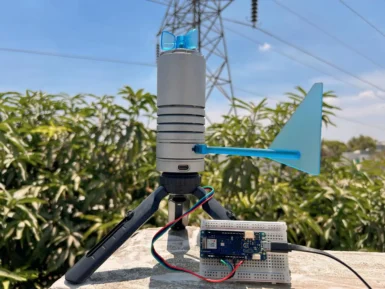
Overview
Grove Base Shield provides a simple way to connect with Arduino boards and help you get rid of breadboard and jumper wires. With the 16 on-board Grove Connectors, you can easily connect with over 300 Grove modules! The pinout of Base Shield V2 is compatible with the Arduino UNO, Arduino Leonardo and the Arduino Mega.
The Arduino Shield usually has the same pin position as the Arduino development board and can be stacked and plugged into the Arduino to implement specific functions.
Power Compatible:
Every Grove connector has four wires, one of which is the VCC. However, not every micro-controller main board needs a supply voltage of 5V, some boards only need 3.3V. That's why we add a power toggle switch to Base Shield V2 so that you can select the suitable voltage of the micro-controller main board you are using via this switch.
For example, if you are using Arduino UNO with Base Shield V2, please turn the switch to 5V position; while using Seeeduino Arch with Base Shield V2, please turn the switch to 3.3V.
Board Compatible:
The pinout of Base Shield V2 is the same as Arduino Uno R3, however Arduino Uno is not the only one that the Base Shield V2 is compatible with, here we listed the boards that we have confirmed that can be used with Base Shield V2:
- Arduino Uno
- Seeeduino V4.2
- Arduino Mega / Seeeduino Mega
- Seeduino LoraWan
- Arduino Leonardo / Seeeduino Lite
- Arduino 101
- Arduino Due
- Intel Edison
- Linkit One
Conformities
Get Inspired
Using the Garmin LIDARLite v3HP, Arduino MKR WIFI 1010 and Pushsafer to detect an intruder and send a push notification to a smartphone.

Being able to monitor the weather in real-time is great for education, research, or simply to analyze how the local climate changes over time. This project by Hackster.io user Pradeep explores how he was able to design a simple station outdoors that could communicate with a cloud-based platform for aggregating the sensed data. The board Pradeep selected is the Arduino MKR WiFi 1010 owing to its low-power SAM D21 microcontroller and Wi-Fi/BLE connectivity for easy, wireless communication. After configured, he connected a DFRobot Lark Weather Station, which contains sensors for measuring wind speed/direction, temperature, humidity, and barometric pressure — all in a compact device. Every second, the MKR WiFi 1010’s sketch polls the sensors for new data over I2C before printing it to USB. The cloud integration aspect was achieved by leveraging Qubitro’s platform to collect and store the data for later visualization and analysis. To set it up, Pradeep created a new device connection and copied the resulting MQTT endpoint/token into his sketch. Then once new data became ready, it got serialized into a JSON payload and sent to the topic where a variety of widgets could then show dials and charts of each weather-related metric. To read more about this DIY weather station, you can visit Pradeep’s project write-up here.







